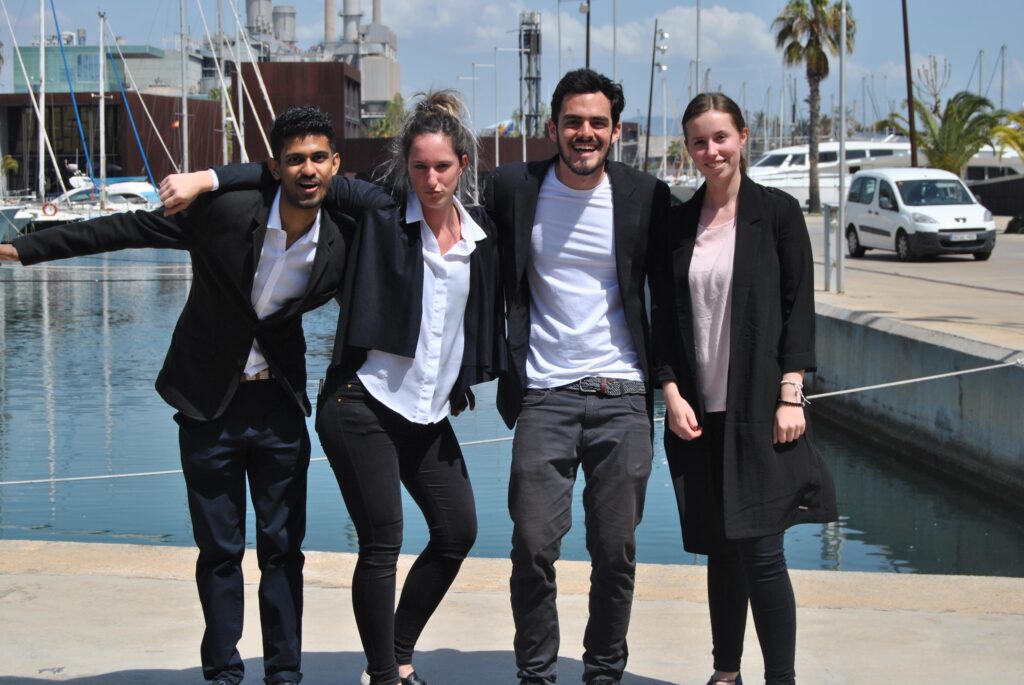When you come to Italy for a Masters’s study through a consultancy, there is a high probability that they would have infused this term “Erasmus” in your minds like you would be having the opportunity to study initial one semester in Italy then the next in some other EU country like Germany and then your 3rd semester in for example France and a final semester in Spain and then you would anywhere in the EU with the help of this Erasmus program. No wonder even I have been told the same and for a traveler mindset like me, it felt like a great opportunity, and got very excited before landing in Italy.
Then when I got to know the actual picture I got the reality check. While the concept of Erasmus is true, like you could do a part of your study in Some other EU country and also you have the opportunity to work on an internship by utilizing this Erasmus program, it is not just a cake walk to go through the entire process. You should know a lot of things involved under the hood to plan your Erasmus program thoroughly. Generally, the university organizes an event every year to explain the process clearly, but as per my experience, most people would still be left with many doubts when they actually start the process. Here we would focus on a few of the important aspects of the Erasmus program so that you could plan it effectively during the course of your study.
What is Erasmus Program
Erasmus program is generally like a student exchange program where a student would spend a certain amount of time in another EU country apart from the home country(In our case the Home country is Italy) to explore a new culture and to achieve a few credits depending on the courses selected and the credits allocated to it. It is funded by the European Union which means the student would receive a certain amount every month if the student gets selected for the program. The main aim of this program is to provide student opportunity by living in an international environment and getting the exposure he needs which would give an added advantage and make the student job-ready.
Types of Erasmus Program
Erasmus programs are of 2 types :
- Erasmus for studies
- Erasmus for Traineeship (Erasmus+)
And these two programs are intended for different purposes and vary a bit in the application and even the selection procedures. Let us discuss both of the programs in detail as below :
1. Erasmus for studies
This program is intended for students to give an opportunity to study for a semester or for a whole year in a different EU country depending on the agreements made by the Home university with their partner universities. The home university provides a list of partner universities with the duration of a semester or a year that a student could carry out their studies in the partner university along with courses offered in the partner universities.
It is the job of the student to check whether the courses offered by the partner university match that of the courses that are taught in the home university. Also, the student has to evaluate at this point of time whether the amount of time that he spends there is worth based on the number of courses selected. Also, the student would generally have a few mandatory courses along with a few electives to pass in order to achieve the degree. So the thing is if the student is planning to pass a mandatory course in a partner university, that course in the partner university has to match completely with the course taught in the home university along with the number of credits and moreover, it is better for the student to discuss it with the course-related professor in order not to have problems while accepting the course substitution as in the end everything depends on the Professor to accept or reject the course. If the professor does not accept the course due to any reason you would not receive your credits and your time would be wasted on that moreover you might need to repeat it again at the home university.
Instead, when it comes to the substitution of an elective the student would generally have more flexibility and the main criteria would be the matching of the subject domain and the credits attached to it.

Step 1: Application Process
So the first step would be selecting the universities based on the matching courses. You would have the choice of selecting 3 universities with the priority order. As each partner university would have a fixed number of admission for each course which would generally range from 1 to 10 and this information also be present in the list of universities. And the student has a particular time frame in order to apply for the process. Once applied the home university will make its best efforts to give the first university on the priority list to each student and in the other case, it would allow the next university on the list. This selection is based on the credits obtained by the student during the time of application submission and if two students have the same credits the student who has the better average would be given the priority.
Step 2: Learning agreement
After the evaluation process, the student is selected based on the selection criteria and is linked to the partner universities. If the student opts not to drop from the process the student in the next place gets the priority and thus the opportunity.
If the student decided to move further with the process he has to fill in the learning agreement that would be provided by the university. Where there we do need to specify the subjects we intend to pursue in the partner university and the course that is being substituted and then needs to get the approval from the Head Of The Department.
The student also needs to sign this document and send it to the Erasmus office in the home university.
These are more or less the process involved. The other most important thing to be kept in mind is the Visa processes that are different for different EU countries for example if it is Spain the process,might be comparatively easier than that of Germany or Sweden from Italy
2. Erasmus for Traineeship (Erasmus+)
This program is aimed at those students who are looking forward to doing an internship in an EU country apart from Italy. This program could be carried out for a period of 6 months to 1 year. The program is open throughout the whole year. But there are specific deadlines based on the month we intend to start the program. For example, if we plan to start this program in April the application process must be completed at least 2 months prior to the start date of the internship. The main difference between this program to that of Erasmus for studies is for this program the university does not provide a list of partner companies to do the traineeship. Instead, it is the job of the student to apply for internships in foreign EU companies and start the process. The rest process is making the learning agreement with the aim and outcomes to be achieved by undergoing the internship and having it signed by the company tutor and the concerned official from the university.

Erasmus grants
The best part of the Erasmus program is the allocation of monthly grants paid by the University as part of the program. The grant awarded for the traineeship program is greater than the grants awarded for Erasmus for studies program. For example, for Erasmus for studies, the monthly grant would be around 270 euros while the grant for the traineeship program would be around 430 euros. It varies depending on the Eu country’s standard of living. Moreover, if you are a university scholarship holder during the Erasmus program you could expect to receive double the amount.
Procedure for grant distribution
Generally, when you get accepted for the program, you would receive the grant in an 80-20 ratio. You would receive 80% of the whole money(of the entire duration) during the first month of the program. You would receive the rest 20% of the money at the end of the program provided you must complete all the necessary information in the learning agreement.
For example, if I am going to pursue my Erasmus journey with a grant of 430 euros a month for six months, I would be receiving a sum of 2064 euros in the first month of the program and then would again receive the remaining total of 516 euros after the completion of the program.
Note: You could choose to do a thesis/dissertation only in Erasmus for the studies program which is not valid for Erasmus for the traineeship program. After the end of the program, you must come back to your home country and obtain your credits from the home university.
